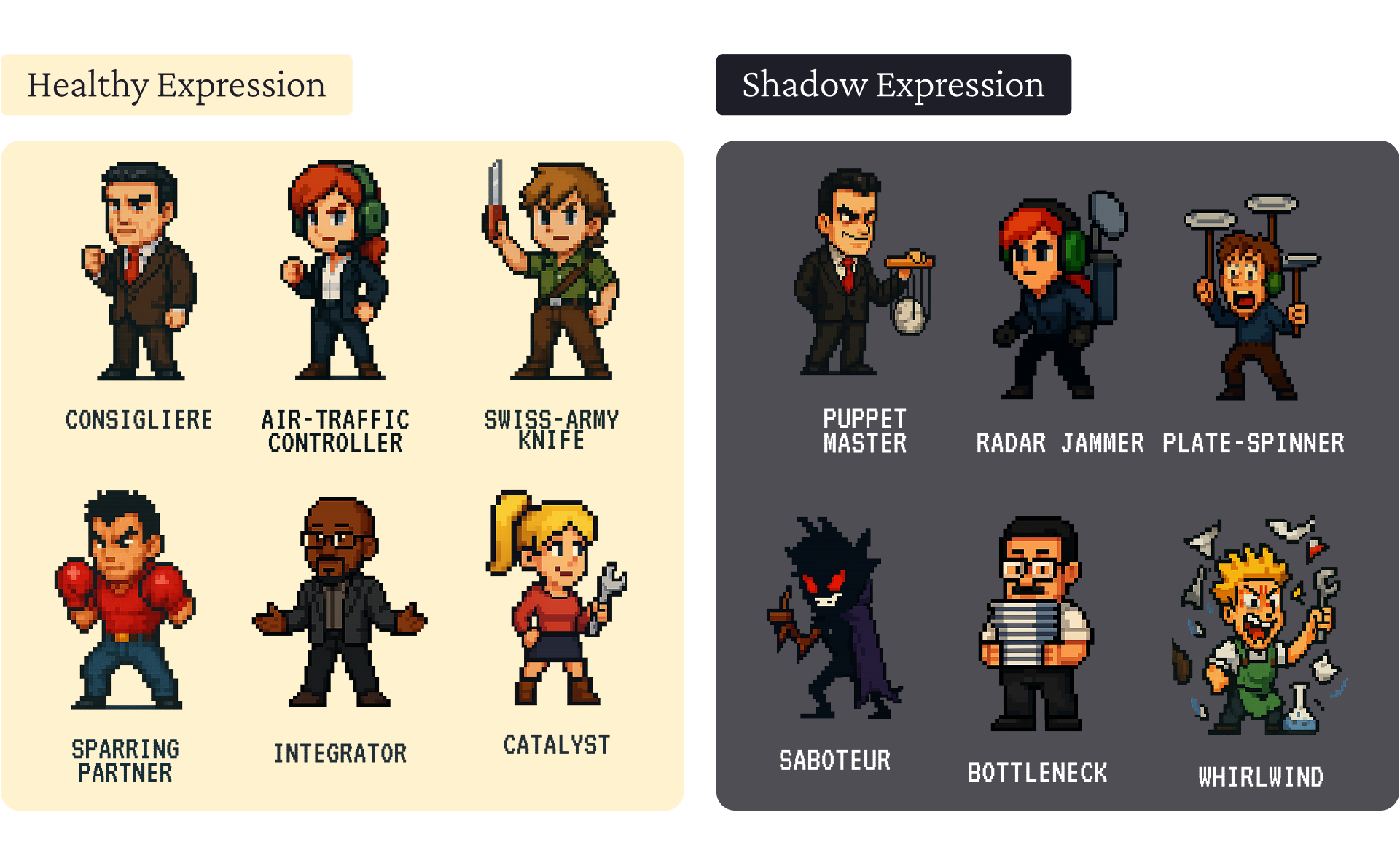The role of the Chief of Staff is to help the CEO and other executives be more effective in running the company. In this unique role, a variety of skills are required to excel. A good Chief of Staff needs to have a deep understanding of the company, its culture, and its people: they must be able to work well with others and build strong relationships. The CoS, on one hand, should be a strategic thinker who can zoom out to see the big picture and help make decisions that are in line with the company's goals. On the other hand, they must be able to handle the stress and difficulty of the details without losing sight of what is important.
The role is a balancing act. Getting the balance right takes patience, grit, and drive. But you don’t have to go it alone! We’ve collected wisdom for 4 great Chiefs of Staff to help you navigate your path to being an excellent CoS.

Solving Alignment: How to Get Your Stakeholders on Board
One of the core responsibilities of a Chief of Staff is managing cross-functional projects. But as projects grow in complexity, alignment among stakeholders can be hard to build, leading to slipped deadlines, budget overages, and confusion all around.
We checked in with Pam Forster, CoS at LumiQ, a podcast-based continuing education platform for accountants. She told us about her firsthand experience of misalignment causing trouble: “Often I was given cross-functional tasks from my Principal without first understanding how they aligned with initiatives other departments were working on, leading to frustration on both ends.”
Pam called achieving alignment the most important lesson of her time as CoS: “The biggest lesson I’ve learned after almost a year in this role is the importance of true alignment, not only on tactical decisions, but focus, priorities, and strategy.”
Here’s how to generate alignment according to Pam:
- Defining roles and responsibilities: It is important to have a clear understanding of everyone's roles and responsibilities in order to work together effectively. Pam suggests “ensuring you are aligned on what, why, and how you’re working together.”
- Trust and intentionality: Trusting relationships are essential for successful projects. Trust arises when people know you’re looking out for them. One way to do this is “being more intentional about projects or tasks you ask for others’ time on.” When you protect others’ time – the most valuable resource in any fast-paced business – they learn to trust in you.
- Communication: Clear and frequent communication is key to keeping both the CoS and the stakeholders aligned on goals and objectives. This includes “flagging when your goals are in direct conflict with each other.”

Council of Peers: The Power of Collaboration
Being a CoS can be a lonely role, due to the unique situation of the role in the corporate hierarchy, the privileged access to information, and often the lack of peers within the company.
We talked to Miranda Russell, CoS at Helcim, a payments processing firm, about the loneliness problem: “The role itself can be lonely, you’re often operating solo without a team, direct reports, or true peers. Even when you have a strong collaborative relationship with your principal it’s still your job to solve problems for them, not bring them more problems.”
We also got Miranda’s take on how to solve for loneliness:
- Make your own safety net: “You need to build your own CoS community. The support and insights I have gained from having a group of people doing a similar role to mine is invaluable.”
- Build belonging: Other CoS provide “a source of camaraderie letting you know that someone has been through this before and you can do it too.”
- Don’t reinvent the wheel: having access to other CoS can help you avoid trying to solve problems from a cold start. “They can provide perspective and examples for all types of situations,” meaning you don’t need to start from scratch.

Crawl, Walk, Run: The Key to Successful Implementation
Emily Smith is the CoS at Lattice, a performance management SaaS company. We talked to her about the joy and challenge of doing brand new things. In her words, “As a Chief of Staff you are often thrown into new situations or asked to take on responsibilities that you haven’t had before. It can be daunting but it is also what makes this role so exciting - you are always given the opportunity to learn new things.”
We asked her how to orient in new situations:
- Done > Perfect: “Always iterate on your processes and don’t let the perfect get in the way of the good. It can be tempting to try and build the perfect process or plan for your executive/organization right from the start, especially if you are doing something for the first time.”
- The crawl, walk, run approach is a great way to gradually implement changes in your organization: it “has been super successful in helping with change management and gaining buy-in. This can be said about rolling out goals for the first time, updating your annual planning process, or even changing the structure of your leadership meetings. Crawl: slowly introduce new ideas via limited pilots. Walk: incorporate pilot feedback and begin change management efforts. Run: launch en masse.
- By taking the time to do this, you can avoid potential problems and ensure a successful transition for your team: “you will learn invaluable lessons along the way about what works and what does not. As a bonus, taking the time to incorporate feedback will ultimately help you build a better process, program, team, etc. than you could have on your own.”

The ‘Waiting-For’ List: Never Drop a Ball Again
Everyone has heard about the benefits of a to-do list. But have you ever heard of a “waiting-for” list? That’s what we learned about from Tyler Young, the Sr. Director of BizOps & CoS to the CFO at Braze, a multichannel customer engagement platform.
Tyler mentioned: “To anticipate potential roadblocks for our senior leaders, I developed a simple tool called my ‘Waiting-For List’, which has become as important as my ‘To-Do List.’ My Waiting-For List tracks the top action items I am waiting on for others to complete.”
This enables you to follow up with people without letting anything slip. Here’s why using a Waiting-For List and following up is important for Chiefs of Staff:
- Following-up demonstrates that Chiefs of Staff are organized and attentive to detail. Tyler starts each day by going through his Waiting-For List to look for upcoming deadlines.
- Additionally, following-up with people is important for Chiefs of Staff because it helps build relationships and trust: “If I notice deadlines are approaching without others having already taken action, I strategically reach out with relevant, timely, and actionable messages to set them up for success.”
- Finally, following-up is simply good manners - it's a way to show that you care about the person you're communicating with and value their time and input. “This sets the standard with Executives at Braze that my messages are sent with the intention to help me help them to help the business.”
Conclusion
We’ve learned 4 great lessons from Chiefs of Staff at LumiQ, Helcim, Lattice, and Braze:
- Develop true alignment with stakeholders by being a trustworthy and intentional communicator
- Build a council of peers as an emotional and problem-solving support network
- Implement projects via a crawl, walk, run approach to incorporate feedback and simplify change management
- Develop a waiting-for list to stay on the ball and set others up for success.
Are there any other best practices you’d add to this list? Let us know at hi@chiefofstaff.network!
To connect with Pam, Miranda, Emily, and Tyler directly, sign up for the Chief of Staff Network today.







.avif)
.avif)








